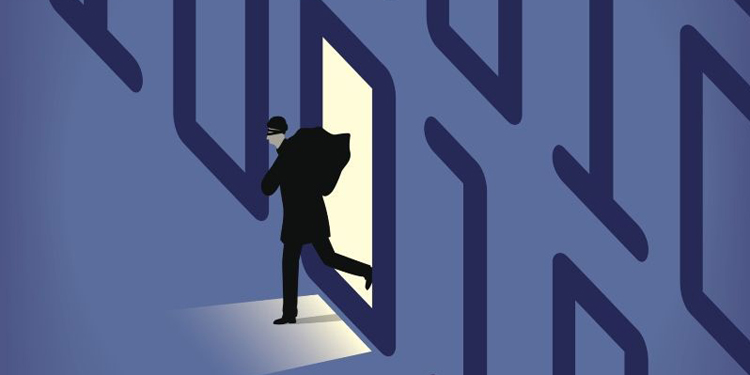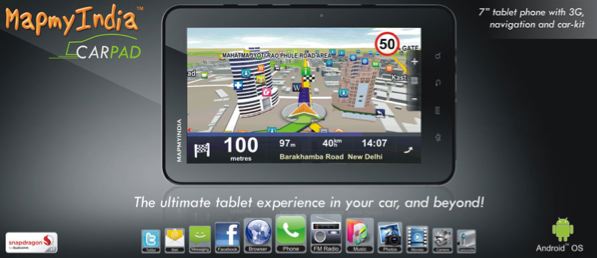
Login Into Your Account

Reset Password
Law enforcement Technology,Law enforcement Agency,Policing Technology,Smart Policing India,Homeland Security India,Border Security India,Border Management India,Cyber Crime news,Cyber Security news,Safety App,Public Safety App,Security App,Women Safety App,Police Initiative,Surveillance news,National Security news,isc event 2016,isc event 2017,scada event 2016,scada event 2017,Critical infrastructure security event 2016,Critical infrastructure security event 2017,iot summit 2016,iot summit 2017,Internet of things seminar 2016,Internet of things seminar 2017,iot seminar delhi 2016,iot seminar delhi 2017,iot conference delhi 2016,iot conference delhi 2017,top security event,security event,security event 2016,security event 2017,security conference 2016,security conference 2017,cso summit 2016,cso summit 2017,Corporate security event,Corporate security conference,security research india,homeland security research india,security think tank india
Law enforcement Technology,Law enforcement Agency,Policing Technology,Smart Policing India,Homeland Security India,Border Security India,Border Management India,Cyber Crime news,Cyber Security news,Safety App,Public Safety App,Security App,Women Safety App,Police Initiative,Surveillance news,National Security news,isc event 2016,isc event 2017,scada event 2016,scada event 2017,Critical infrastructure security event 2016,Critical infrastructure security event 2017,iot summit 2016,iot summit 2017,Internet of things seminar 2016,Internet of things seminar 2017,iot seminar delhi 2016,iot seminar delhi 2017,iot conference delhi 2016,iot conference delhi 2017,top security event,security event,security event 2016,security event 2017,security conference 2016,security conference 2017,cso summit 2016,cso summit 2017,Corporate security event,Corporate security conference,security research india,homeland security research india,security think tank india

Cybercrimes show an alarming increase in Rajasthan
The state recorded a total of 974 cases in 2015 compared to 732 in 2014, an alarming spike of 33.06%. Reporting 574 cases, Jaipur had the highest number of cases of online crime.
Speaking about the increase in crime rate, SP Sharat Kaviraj of SCRB told TOI that were several stumbling blocks that have led to the increase in crime rate. “People open bank accounts on fake documents and obtain SIM cards on forged identification cards. These are the two major problems we encounter while trying to nab the offender,” he added.
According to Kaviraj, who was also part of the team that compiled the comprehensive report about crimes in Rajasthan-2105, the international jurisdiction in online frauds impedes investigation.
“We have no control over international email service providers. They often decline to cooperate with us citing issues of jurisdiction,” he said.
A senior official of the Jaipur police attributed lack of training and absence of a dedicated cadre to fight cybercrimes for the rise in such crimes. “We have a special telecommunication cadre. But cops are not equipped to tackle such technical cases,” the official added.
In 2014, cops arrested 311 culprits for cyber-crimes. But only 197 people have been arrested in 2015, a decrease of 36.66%. The police are equally troubled by the slow rate of conviction in such cases. For instance, Jaipur (west) police district recorded the highest number of cases in the city, registering 220 cybercrimes. But they have filed chargesheets in only 14 cases and have about 51 pending cases.
“The police rely on private investigators and hackers to probe matters of online fraud. But, there is always a suspicion of crucial information being leaked to these investigators. Therefore, the only solution is to set up an in-house investigation unit,” a senior police official told TOI.
Even in cities such as Ganganagar, Bhilwara, Tonk, and Dausa, where the internet penetration is limited, cybercrimes are on the rise.

IoT-based DDoS attacks to rise in 2017: Report
According to Sophos, global network and endpoint security firm, financial infrastructure is at greater attack risk as the use of targeted "phishing" and "whaling" continues to grow.
"Security is now high on the radar for the security C-suites. Unfortunately, many organisations still do not have their security basics right and remain vulnerable to cyberattacks," said Sunil Sharma, Vice President (Sales) Sophos, India and Saarc.
Cybercriminals will use ever more sophisticated and convincing targeted attacks to lure users into compromising themselves by bringing together multiple technical and social elements and probe an organisation's network to proactively attack a specific target.
With 'old' ransomware looming around web, users may fall victim to attacks that cannot be cured because payment locations no longer work, the report noted.
"There are six key measures that organisations should put in place to help keep more complex threats at bay: move from layered to integrated security; deploy next-generation endpoint protection; prioritise risk-based security; automate the basics; build staff and process to deter mitigate social attacks; and improve defender coordination," Sharma added.
Using cameras and microphones to spy on households, cyber criminals may target people using home IoT devices to find a way to profit.
"But once attackers 'own' a device on a home network, they can compromise other devices such as laptops containing important personal data," the report added.
As encryption makes it hard to inspect traffic, criminals can use it as a cover to sneak through a network.
"Security products will need to tightly integrate network and client capabilities, to rapidly recognise security events after code is decrypted on the endpoint," Sophos suggested.
The company predicted that in 2017, societies will face growing risks from both disinformation and voting system compromise, as technology-based attacks have become increasingly political.
NewsletterA A

National Instruments launches IoT lab
Intel, Cisco, Hewlett Packard Enterprise, OSIsoft, Kalypso and Xilinx are among the companies sponsoring the IoT lab. National Instruments said the lab will unite companies with expertise in communications protocols, controller hardware, I/O components, processing elements and software platforms.
“A working showcase for new technologies can help all companies involved drive breakthrough innovations for utility grids, manufacturing, asset health monitoring and several other industries,” said Jamie Smith, director of embedded systems at National Instruments. “The industrial ‘internet of things’ represents a collection of technology and data building next-generation distributed solutions – solutions that are going to change the way we think about transportation, energy and health care.”
“5G” testing
National Instruments is also taking a proactive approach to “5G” testing. The company established a lead user program for 5G prototypes in 2010.
“We work with industry as well as academic researchers on developing prototypes,” said James Kimery, National Instruments’ director of wireless research, adding a major goal of the program is to bridge the gap between academia and industry.
“The academic research, in particular, stopped with a research paper, or it stopped with simulation,” Kimery said. “As you look at some of these 5G scenarios they are very complex and simulation only gets you so far. … If you’re trying to model a million devices on a network or 10 gigabits per second or more data rates, along with low latency, those are really challenging problems that I don’t think can be accurately described with a model.”
National Instruments is working with Nokia, the University of Texas at Austin, Bristol University in the U.K., and other universities in Europe and Asia.
5Click to share on Facebook (Opens in new window)512Click to share on LinkedIn (Opens in new window)12Click to share on Twitter (Opens in new window)Click to share on Google+ (Opens in new window)

India, US sign MoU in cyber security cooperation
"India and the US have signed a memorandum of understanding between the Indian Computer Emergency Response Team (CERT- In) under the Ministry of Electronics nd Information technology of the government of India and the Department of Homeland Security, government of the United States of America on cooperation in the field of cyber security," the statement said.
The agreement was signed by Aruna Sundararajan, secretary, Ministry of Electronics and Information Technology, and Richard Verma, US Ambassador to India, on Wednesday here.
"The MoU intends to promote closer co-operation and the exchange of information pertaining to the cyber security in accordance with the relevant laws, rules and regulations of each economy and this MoU and on the basis of equality, reciprocity and mutual benefit," the statement said.
Earlier the US and India had signed an MoU on July 19, 2011 to promote closer cooperation and timely exchange of information between the organisations of their respective governments responsible for cyber security.
Since, July 19, 2011, regular interactions between CERT-In and US CERT are taking place to share the information and discuss cyber security-related issues.
In continuation to the cooperation in cyber security areas both have renewed the MoU, the statement added.

6 Cybersecurity Predictions for 2017
With cybersecurity firmly entrenched as one of the most consequential issues impacting international security, politics, economic stability and transactional crime, an understanding of existing and emerging cyber risks is more relevant than ever before.
“In 2016, we witnessed everything from cyberattacks influencing public opinion to hacked IoT devices and the introduction of new cybersecurity regulations. This year we’ll see an intensification of these threats, along with new challenges and a blurring of lines between the actions and responsibilities of the state, markets, businesses and civil society,” said Ed Stroz, Co-President and Co-Founder of Stroz Friedberg. “The flood of fake news and nation state-backed attacks in this past year’s election are just a sign of things to come, as attackers find new ways to seek faster and wider access to data and exploit sensitive information.”
Here’s a look at the 6 cybersecurity predictions:
1. Criminals harness IoT devices as botnets to attack infrastructure
In 2017, Stroz Friedberg predicts there will be an increase in IoT devices compromised, harnessed as botnets and used as launching points for malware propagation, SPAM, DDoS attacks and anonymizing malicious activities.
2. Nation state cyber espionage and information war influences global and political policy
Cyber espionage will continue to influence global politics and will spread to the upcoming elections in Latin America and Europe. Russia, China, Iran and North Korea will remain regions of great concern in 2017, as they continue to develop deep pools of cybercrime talent.
3. Data integrity attacks rise
Data sabotage as the next big threat will become a reality in 2017. Criminals will seek to sow confusion and doubt over the accuracy and reliability of information, impairing decision-making across the private and public sector.
4. Spear-phishing and social engineering tactics become craftier, more targeted and more advanced
As organizations continue to leverage evolving technologies, including the cloud and IoT, and in parallel shore up perimeter defenses to raise the bar of network security, criminals will increase their focus on the human element as an entry point. In 2017, advanced social engineering tactics will become more targeted, cunning and more effective, exploiting the weakest link – employees – that organizations always find challenging to safeguard.
5. Regulatory pressures make red teaming the global gold standard with cybersecurity talent development recognized as a key challenge
Increased pressure from regulators worldwide will push in-house red teaming capabilities to accelerate in 2017. In addition, companies that are not in the cyber business will face a different challenge – recruiting, motivating and retaining highly technical cyber talent to keep their red teams at the forefront of cybersecurity. This push will likely first occur in financial hubs such as Hong Kong, Singapore, the EU, and even the U.S.
6. Industry first-movers embrace pre-M&A cybersecurity due diligence
The financial services industry and other regulated sectors will be early-adopters of making cybersecurity due diligence a critical part of the pre-M&A due diligence process, learning from high profile transactions that were derailed last year, following the exposure of cyber vulnerabilities.
In 2016, Stroz Friedberg’s correctly predicted events such as cyber threats influencing the U.S. presidential election and security incidents with IoT devices shifting dialogue from functionality to security.
Industry is not powerless or relegated to sit by and wait for government directives to manage risks. Stroz Friedberg provides recommendations on how organizations can increase their resilience, shore up operations and boost defenses in the face of a substantial cyber threat landscape.

MapmyIndia joins hands with Aeris for Internet of Things
The global IoT market is expected to cross $200 billion by 2020. The IoT market in India stood at $5.6 billion with 200 million connected devices in 2016. This is expected to grow to $15 billion with 2.7 billion devices by 2020 presenting a significant opportunity for technology and service providers.
Rakesh Verma, managing director, MapmyIndia said, the world is moving from automatic to autonomous operations. "The partnership with Aeris, a pioneer in the IoT space, will go a long way in making the Indian businesses globally competitive. I am confident that the combination of MapmyIndia’s best-in-class mapping & GIS solutions and the pioneering IoT prowess and global experience of Aeris will be a big boon for not just the Indian businesses and enterprises but will benefit the whole country."
Both companies will jointly develop solutions which is expected to address business challenges such as ubiquitous tracking through connectivity.
“We are witnessing the evolution of the IoT ecosystem globally with businesses recognizing the need to invest in technologies and solutions based on IoT. Our tie-up with MapmyIndia is primed towards helping businesses leverage the potential of IoT to realize business benefits that are multi-dimensional, innovation driven and transformative. I am confident that this will change the way verticals operate and companies perform,” said Dr. Rishi Bhatnagar, president, Aeris Communications.

Karnataka pitches for investments in tourism
Karnataka’s information technology and its youthful start-up prowess is now globally known and acknowledged. “What is not so well known is the strength of its institutions, its industry, its people and places. ,with every Wipro, we have a Mangalayaan, with every Flipkart, we have a Tejas light combat aircraft and sophisticated drones and with every Narayana Murthy, we have a CNR Rao,” said Karnataka Industries Minister RV Deshpande.
Addressing the 14th edition of the Pravasi Bharatiya Divas meet, Deshpande pitched for investments in tourism especially to woo youths. “Karnataka is not all (high-technology), we have world heritage sites, deep woods, sandy beaches and some of the widest range of wildlife.”
“We also have India’s best sporting academies and adventure sports. Most importantly, we have the most social and cultured people you will find anywhere in the world,” he added.
Deshpande said “the Karnataka government has embarked on a road map towards improving everything we have and examining and implementing everything that is new and innovative, aimed at enhancing the experience of every citizen in this state — whether you are a Nivasi or a Pravasi.”
Disruptive tech
As IT & ITeS matures as a sector in Karnataka, the government is planning to change its perception and looks at embracing disruptive technologies to reposition itself.
Speaking at the Pravasi Bharatiya Divas’ session on ‘Fuelling growth through disruptive innovations: Start-up ecosystem in Karnataka’, Priyank Kharge, Minister for Information Technology, Biotechnology and Tourism, said “People, corporates and government have always associated ‘BengaluruITE.biz’ with IT & ITeS. Now, we needed to change that perception because IT & ITeS have matured as a sector in Karnataka and we need to do something disruptive to reposition ourselves.”
“In order to redefine BengaluruITE.biz, theme ‘Define the Next’ was chosen after great deliberation as the focus of the state going forward to be creative and disruptive and emerging technologies like Internet of Things (IoT), Artificial Intelligence, robotics, aerospace, DefTronics, cyber security, Big Data Analytics, machine learning among various other verticals are being explored. We have taken a call to ensure we emerge as the innovation leaders right from agriculture to aerospace,” he added.
As these disruptive innovations are happening very rapidly in India, today we are considered as one of the best ecosystems in the world for innovations that has the potential to catapult the economy, he further added.
Karnataka is home to over 4,900 start-ups as per global start-ups eco-system ranking report of 2015. “Under our multi-sector policy, we are aiming at stimulating growth of 20,000 tech start-ups, including 6,000 product start-ups by 2020. We have established one of the best start-up eco-systems in the country and are confident of achieving the objectives set forth in the multi-sector start-up policy,” explained Kharge.

Will the IoT Hype Become a Reality in 2017?
Gartner analysts forecast that the market for IoT devices is poised to explode and will reach nearly 21 billion connected devices by 2020 according to Gartner. Industry reports such as by CCS Insight also estimate that the global wearable technology market will be worth $25 billion by 2020, indicating that the market is set to grow from 84 million units in 2015 to 245 million units in 2019. India is eyeing a share of 5 to 6 per cent in the USD 300 billion global IoT industry in the next five years as reported by Livemint. These enormous figures show that the IoT – in all its different forms – will span every aspect of our lives.
Complex communication technologies are needed
It goes without saying that with IoT we are facing a new era that relies on ubiquitous networks. Yet, as the future connected world takes shape, we need to solve the challenge posed by the web of complex interconnections. The real enabler for IoT is an inherent ability to distribute the monitoring and control of individual machines without a traditional ‘closed’ network.
A big hurdle in the way of achieving the IoT dream is that there is no cross-industry drive to standardise IoT applications and the interfaces that people use to access them at present. There is also an over reliance on the user to manage their IoT applications in a way that brings them the most value. To illustrate, at the moment the smartphone is the key interface for IoT applications. But how is a user supposed to make sense of the IoT data they hold if they need to access hundreds of individual applications covering areas such as fitness, car diagnostics, energy monitoring, home security, irrigation systems and automated shopping? Consider this alongside the dozens of business and industrial applications they use at work – that’s a lot of work for your average smartphone user.
At the moment, IoT data sets may not be huge, but we are already seeing increasing complexity in different interconnected sets of data, in a smart home for example, where temperature sensors might be linked to the freezer to optimise energy consumption. These IoT ecosystems require highly sophisticated systems for communication and management to ensure interoperability and the seamless user experience that people crave.
Analysts Frost and Sullivan have highlighted that this lack of interoperability among devices and objects is a major hurdle for widespread IoT adoption; and arguably initiatives such as the Open Automotive Alliance – to establish standards for the Android platform for communication between mobile devices and vehicles – only address one part of the IoT puzzle. This is a business issue rather than simply a technical one: McKinsey has highlighted that interoperability is required for 40% of potential value across IoT applications. Without interoperability, IoT devices risk becoming technology for technology’s sake.
What should the ecosystem for IoT look like?
In order to create sustainable growth for businesses, the IoT network will require a layered architectural approach. This architecture must look much like the custom-designed industrial control systems of today, but extended with Internet connectivity and cloud functions. This IoT ecosystem needs to comprise intelligent and embedded systems, networked services, infrastructure, applications, security, analytic tools and professional services. The IoT European Research Cluster SRIA has described the significance of these different layers.
“Sensors provide much of the data gathering, actuators act, radios/communications chips provide the underlying connectivity, micro-controllers provide the processing of that data, modules combine the radio, sensor and microcontroller, combine it with storage, and make it “insertable” into a device. Platform software provides the underlying management and billing capabilities of an IoT network, while application software presents all the information gathered in a usable and analysable format for end users. The underlying telecom infrastructure provides the means of transporting the data while a service infrastructure needs to be created for the tasks of designing, installing, monitoring and servicing the IoT deployment.”
The most crucial aspect of all of this is that “companies will compete at one layer of the IoT value chain”. Yet, the biggest value is derived when the different layers interoperate through partnerships, to innovate in the development of new IoT solutions and to help overcome issues that might arise in a web of increasingly complex web of connections.
When it comes to the network layer of smart cities, for example – just like cloud and mobility in the enterprise – IoT is set to challenge and complicate the network infrastructure seen in smart cities. A failure of network communications within an IoT ecosystem could result in anything from a fitness tracker not syncing with a smartphone, to a loss of notification for a health-related event from a patient being monitored remotely.
Only a combination of open, public Internet and hybrid networking can deliver the levels of reliability, security, scalability and flexibility that the IoT requires. Traditional private WANs are simply too slow, inflexible and expensive for the multitude of different IoT applications and connections. On the other hand – while flexible – the public Internet isn’t reliable enough for the most critical IoT use cases, such as new IoT-enabled safety mechanisms in the airline industry. By using the public Internet together with hybrid networks, which combine the flexibility of the Internet with the security and reliability of a WAN, we are able to build a solid foundation for the IoT world.
Furthermore, there needs to be collaboration between the developers that make the different IoT applications, and the companies that provide the connectivity – as well as the policy makers that govern the systems surrounding IoT applications. So, policy makers need to start thinking about IoT traffic differently to traditional data traffic, due to the potentially disastrous consequences of a network failure on electric grids, transport systems, and future healthcare.
Endless opportunities
With IoT becoming real, its applications across industries are also witnessing a surge. For example, logistics companies are able to control their cargo remotely in real-time and make adjustments seamlessly at every stage of the supply chain. In smart cities, transportation, infrastructure, energy supply, administration and public safety are all connected to create economic efficiencies, save energy and even save lives.
Yet, only through multilayer architectures, new hybrid networking approaches and real cross-industry collaboration underpinning an IoT ecosystem, can enterprises make the most of the new business opportunities that IoT will bring and improve the lives of entire communities and cities with new smart applications. The opportunities are endless, as things that were previously perceived as being completely separate and unconnected, can now come together, share data, and provide people with new, actionable insights.
The author of this article V S Shridhar is Senior Vice President & Head, Internet of Things, Tata

Separate control rooms set up for disaster management, poll purposes
District magistrate Ravinath Raman directed the disaster management control room team to offer timely assistance to callers in distress. The team members informed him that all five roads to Chakrata that were blocked due to snowfall were cleared by Sunday.
The DM also directed the election control room team to be fair and fearless in taking action on complaints regarding violation of the model code of conduct. R C Bahuguna, nodal officer of election control room, told TOI that only one complaint was received at the control room so far. "The complainant alleged that 500 old pipes were replaced with new pipes after the model code of conduct came into force. During an inquiry, executive engineer of Jal Sansthan informed us that the pipes were already there even before the poll code was enforced."

The protector is the perpetrator
The National Human Rights Commission (NHRC) found that the rights of the victims were ‘grossly violated’ by the police for which Chattisgarh government is ‘vicariously liable’.
Last week, video images were captured of Mumbai cops accepting bribes from relatives of inmates to let the relatives meet inmates showing the gory side of corruption in police and jail systems of India.
From being the protector to becoming the perpetrator is downright assault on our democracy.
Over the years, several cases of corruption and wrongdoings by police both in the jail and outside the jail have surfaced and made us question our law keepers.
India Policing: A dilemma
According to a study by Transparency International, 62 per cent of Indians admitted to paying bribe during 2012 - 2013.
Another study by Janaagraha observes that the police in 6 metro cities accepted an estimated Rs 14.6 million in bribes for 7,170 reported cases of bribery in 2013.
The organisation further estimated that a person in India pays around Rs 4 lakhs in bribes in his/her lifetime.
Yet there is another side to the story. Nearly 90 per cent of the police staff currently works for more than eight hours a day and the staff works for more than 14 hours a day.
Nearly half of the police personnel have reported that they are called eight to ten times a month during their off days.
India’s current police to population ratio is 145 personnel per one lakh population, much below the UN prescribed ratio of 222 personnel per one lakh population.
Globally a challenge
Corruption by police and in jails is a challenge globally.
Interestingly, in abroad corruption in jails has been popularised by the spate of television dramas set in correctional facilities. According to a study in the United States, prison guards at Rikers Island in New York could substantially supplement their income by $400 - $900 (Rs 30,000 to Rs 60,000) a day by smuggling drugs, weapons and other contraband into prisons.
Apart from financial bribes, it was found that sexual favours are also traded for better benefits.
The problem is not limited to just officials accepting bribes in prison complexes in the US. There is a structural issue as most prisons in US are run by profit making corporations. Thus, in order to maintain their profits, many people are wrongly imprisoned or kept in prison to increase the bed count by these private organisations.
According to a survey by Transparency International measuring perceptions of the extent of corruption in different Institutions in 107 countries, ranks police as the second most corrupt institution globally.
This clearly indicates that the image of the law protectors around the world is severely scarred with suspicion.
Paradigm Shift
The Indian prime minister recently talked of promoting ‘SMART’ policing, the letters standing for strict or sensitive, modern or mobile, alert or accountable, reliable or responsive, and trained or techno-savvy. The challenge is that when you decide to change course it needs an action that is all encompassing.
It requires hard clampdown on corruption but also needs the reform to treat policemen with the respect that they deserve.
Not like a boys club that operates on internal abuse and coercion.
The police is not the military which has a strict code of conduct and checks and balances. Unlike military, police is constantly exposed to civilians and thus it needs to function in collaboration with the city and it’s people.
The police belongs to the community and should be one with the community.
One needs to understand that policemen are not hired security guards. It is an institution that can help sustain democracy in its truest form.
Newsletter
Sign Up for Monthly Newsletter
Recent Tweets
CONTACT US
Crux Center for Security
Research and Events (CCSRE)
3rd Floor, Tower-B, Unitech Cyber Park
Sector 39, Gurugram,122022
0124- 4207903, 05, 06
Copyright © 2016 Crux Center For Security Research And Events (CCSRE) | All Right Reserved
